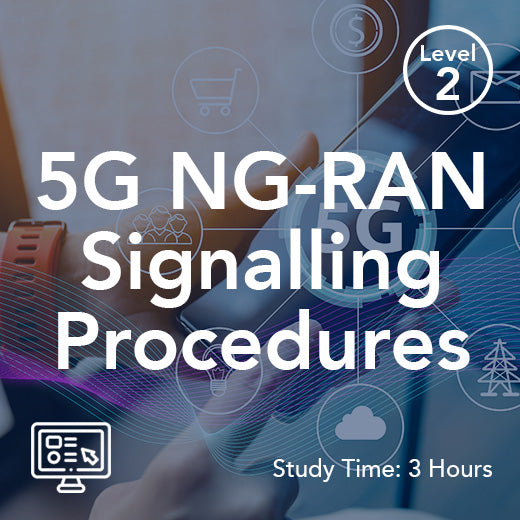Understanding Frequency Division Multiplexing: A Practical Guide
- , by Stephanie Burrell
- 12 min reading time
Frequency Division Multiplexing (FDM) is a method used to transmit multiple signals simultaneously over a single communication channel. By dividing the available bandwidth into distinct frequency bands, FDM allows each signal to occupy a unique portion of the spectrum, thus preventing interference among them. In FDM systems, the individually modulated signals are combined to form a composite signal, which is then transmitted over the shared medium. This technique is pivotal in various applications, including radio broadcasting and telecommunications, where efficient use of bandwidth is crucial. In this practical guide, we will delve into the mechanics of FDM, explore its benefits and limitations, and provide real-world examples to help you understand what is frequency division multiplexing and how it impacts everyday technology.
Introduction to Frequency Division Multiplexing
What is Frequency Division Multiplexing and How Does it Transmit Multiple Signals?
Frequency Division Multiplexing (FDM) is a technique that enables multiple signals to be transmitted over a single communication medium. By assigning each signal a distinct frequency band within the available spectrum, FDM ensures that signals do not interfere with one another. FDM enables multiple users to share the same communication medium by assigning their signals to different carrier frequencies, allowing each user to transmit independently without interference. This separation allows for simultaneous data transmission, making the process efficient and effective. FDM is widely used in various fields, such as radio and television broadcasting, where it supports the transmission of different channels over the same network. In telecommunications, FDM enables multiple calls to occur concurrently over a single cable. This method maximizes the use of available bandwidth, which is a critical resource in communication systems. Understanding what is frequency division multiplexing is essential for grasping how modern communication networks operate without interference, delivering clear and reliable signals to users.
Importance in Modern Communication
Frequency Division Multiplexing plays a crucial role in modern communication systems. It allows multiple data streams to share a single transmission path, optimizing the use of available bandwidth. This efficiency is vital for handling the growing demand for data transmission in a world increasingly reliant on digital communication. In radio broadcasting, FDM enables different stations to broadcast simultaneously without interference, providing diverse content to listeners. In telecommunications, it allows multiple phone conversations to occur simultaneously over a single line, enhancing connectivity and reducing infrastructure costs. Additionally, FDM is essential in cable television, where it supports the delivery of numerous channels to viewers through a single cable. FDM and its advanced forms, such as OFDM, are also fundamental to cellular networks and digital television, enabling high-speed mobile communication for 4G LTE and 5G, as well as robust digital TV broadcasting standards like DVB-T and ATSC 3.0. By understanding what is frequency division multiplexing, we can appreciate how it facilitates seamless and efficient communication in various applications, maintaining the flow of information and entertainment in our daily lives.
Types of Multiplexing
Multiplexing is a foundational technique in communication systems that enables multiple signals to be transmitted over a single communication channel, significantly enhancing the efficiency of data transmission. There are several main types of multiplexing, each utilizing a different strategy to divide and manage the available bandwidth or channel resources.
Frequency Division Multiplexing (FDM) is a classic method where the available bandwidth is split into multiple frequency bands. Each band is assigned to a separate signal, allowing different signals to be carried simultaneously over the same communication channel. This frequency division ensures that each signal operates within its own frequency band, preventing interference and enabling efficient division multiplexing. FDM is widely used in radio broadcasting, television channels, and telephone lines.
Time Division Multiplexing (TDM) takes a different approach by dividing the communication channel into time slots. Each signal is allocated a specific time slot in a repeating sequence, so multiple signals can share the same channel without overlapping. This method is especially effective for digital signals and is commonly used in digital telephony and data networks.
Wavelength Division Multiplexing (WDM) is similar to FDM but is specifically designed for optical fiber communication. In WDM, multiple data streams are transmitted simultaneously over a single optical fiber, with each stream assigned a unique wavelength (or color) of light. This technique allows for extremely high bandwidth and is essential for modern high-speed fiber optic networks.
Code Division Multiplexing (CDM), also known as Code Division Multiple Access (CDMA), uses unique codes to distinguish between different signals transmitted over the same frequency band. Each signal is encoded with a specific code, allowing multiple independent signals to be carried simultaneously without interference. CDM is widely used in mobile networks and wireless communications.
Orthogonal Frequency Division Multiplexing (OFDM) is an advanced form of FDM that uses multiple orthogonal carrier frequencies. By ensuring that the carrier frequencies are mathematically orthogonal, OFDM can transmit multiple channels in close proximity without inter carrier interference. This technique is highly efficient and is used in broadband access, digital audio broadcasting, digital video broadcasting, and wireless local area networks.
By leveraging these various multiplexing techniques—frequency division, time division, wavelength division, and code division—communication systems can transmit multiple signals, data streams, or channels over a single communication channel, maximizing the use of available bandwidth and ensuring reliable, high-capacity data transmission.
How Frequency Division Multiplexing Works
Basic Principles Explained
Frequency Division Multiplexing operates on the principle of dividing the available bandwidth into smaller frequency bands, each assigned to a different signal or data stream. Each of these bands is modulated by its respective signal, allowing multiple signals to be carried simultaneously over a single communication channel. Crucially, the frequency bands are spaced apart to prevent overlap and interference, which ensures clear and distinct signal transmission. At the receiving end, these signals are demodulated and separated back into their original form. A bank of bandpass filters is used at the receiver to isolate each frequency band and recover the original signals without interference. This system requires precise frequency management to allocate and maintain the distinct bands effectively. FDM is inherently reliant on the availability of sufficient bandwidth to support multiple channels, making it ideal for applications like broadcasting and telecommunications. Understanding what is frequency division multiplexing and how these basic principles are applied is key to appreciating its role in modern communication systems, where reliability and efficiency are paramount.
Understanding Bandwidth Allocation
Bandwidth allocation is a fundamental aspect of Frequency Division Multiplexing. It involves dividing the total available bandwidth of a communication channel into several non-overlapping frequency bands. Each band is then assigned to a specific signal or data stream. Each frequency channel corresponds to a different frequency band, allowing multiple signals to be transmitted at different frequencies without interference. This allocation must be carefully managed to ensure that each signal has adequate bandwidth for its transmission needs while minimizing the risk of interference. The process begins with analyzing the total bandwidth and the number of signals to be transmitted. The signals are then assigned distinct frequency ranges, with guard bands placed between them to prevent overlap and ensure signal integrity. These guard bands act as buffers, preventing adjacent signals from bleeding into one another. Effective bandwidth allocation is crucial for maximizing channel capacity and ensuring efficient communication. By understanding what is frequency division multiplexing and how bandwidth allocation works, we can appreciate the precision required to maintain clear and reliable transmissions across various applications.
Applications of Frequency Division Multiplexing
Telecommunications and Broadcasting
Frequency Division Multiplexing is integral to both telecommunications and broadcasting industries. In telecommunications, FDM enables the concurrent transmission of multiple phone calls or data streams over the same physical medium, such as a wire or fiber optic cable. This ability to handle multiple conversations simultaneously is essential for efficient network operation and cost-effective infrastructure use. FDM can accommodate many signals at once, and in some broadcasting scenarios, multiple transmitters may send the same signal over the same frequency to improve coverage and reduce interference. Meanwhile, in the broadcasting sector, FDM allows multiple radio and television channels to be transmitted over a single frequency spectrum. Each station is assigned a specific frequency band, ensuring that signals do not interfere with one another. This allocation maximizes the use of available spectrum, providing diverse content to audiences without collision. Understanding what is frequency division multiplexing and its application in these fields highlights its role in delivering seamless, multi-channel communication and entertainment, supporting the modern demand for connectivity and content variety.
Internet and Data Transmission
Frequency Division Multiplexing also plays a significant role in internet and data transmission. It facilitates the simultaneous transfer of multiple data streams over the same broadband connection. This capability is especially crucial for DSL (Digital Subscriber Line) internet services, which use existing telephone lines to deliver high-speed internet access. FDM improves bandwidth efficiency by allowing higher bandwidth utilization for simultaneous data and voice transmission. FDM divides the available bandwidth into separate channels for internet data and voice communication, allowing users to browse the web and make phone calls simultaneously without interference. In data centers and network infrastructures, FDM supports efficient data transmission by enabling multiple data streams to coexist on a single fiber optic cable, maximizing throughput and reducing latency. Understanding what is frequency division multiplexing and its application in internet and data transmission underscores its importance in maintaining fast, reliable connectivity in an increasingly digital world. As data demands grow, FDM’s role in optimizing bandwidth usage becomes even more vital.
Advantages and Challenges
Benefits of Using FDM
Frequency Division Multiplexing offers several benefits that make it a preferred choice in various communication applications. First, it enables the efficient use of available bandwidth by allowing multiple signals to share the same communication medium. In FDM, each signal is modulated onto a unique carrier frequency, resulting in a transmitted signal that carries multiple data streams simultaneously. This capability is crucial for maximizing the capacity of communication channels, especially in environments with limited resources. Second, FDM provides a high level of security and privacy, as each signal occupies a distinct frequency band, reducing the risk of interference and eavesdropping. Additionally, FDM systems are relatively simple to implement and maintain, making them cost-effective solutions for many broadcast and telecommunication services. Furthermore, FDM supports simultaneous data and voice transmission, enhancing user experience by providing uninterrupted services. Understanding what is frequency division multiplexing and recognizing its benefits helps highlight its significance in facilitating robust and efficient communication networks that meet the ever-growing demand for data and connectivity.
Limitations and Solutions
Despite its advantages, Frequency Division Multiplexing has some limitations. One major challenge is the requirement for wide bandwidth to accommodate multiple signals, which may not always be available. This limitation can restrict FDM’s applicability in bandwidth-constrained environments. Additionally, the presence of guard bands, which prevent interference between signals, can lead to inefficient use of the available spectrum. Another issue is the potential for signal degradation over long distances, which can affect transmission quality. However, several solutions exist to address these challenges. Advanced modulation and compression techniques can optimize bandwidth usage, reducing the need for extensive guard bands. Furthermore, signal amplification and repeaters can mitigate distance-related degradation, enhancing signal clarity. Adding redundant data through error correction techniques, such as Forward Error Correction (FEC), can further improve the reliability of FDM transmissions by enabling the detection and correction of errors during transmission.
Understanding what is frequency division multiplexing and recognizing these limitations and solutions helps in designing more effective communication systems that can leverage FDM’s strengths while minimizing its drawbacks, ensuring reliable data transmission across various applications.
Future of Frequency Division Multiplexing
Emerging Technologies and Trends
The future of Frequency Division Multiplexing is being shaped by emerging technologies and trends that promise to enhance its efficiency and applicability. One significant trend is the integration of FDM with advanced digital signal processing techniques. This integration can improve signal quality, reduce interference, and increase the capacity of communication systems. Additionally, the advent of 5G technology is set to expand FDM’s role in telecommunications, as it demands more sophisticated multiplexing strategies to handle increased data loads and provide faster connectivity. These advancements are designed to achieve high spectral efficiency, maximizing data throughput in next-generation networks. Another emerging trend is the exploration of FDM in optical communication systems, where it can support high-speed data transmission over fiber optic networks. Furthermore, research into cognitive radio technology may enable more dynamic and adaptive use of frequency bands, optimizing the spectrum allocation in real-time. Understanding what is frequency division multiplexing and keeping abreast of these trends ensures that FDM remains a vital component of future communication innovations.
Innovations and Developments
Innovations in Frequency Division Multiplexing are paving the way for more efficient and versatile communication systems. One notable development is the enhancement of spectrally efficient FDM techniques, which aim to maximize the use of available bandwidth while minimizing interference. Researchers are also exploring ways to integrate FDM with other multiplexing methods, such as Time Division Multiplexing (TDM), to create hybrid systems that can adapt to varying communication needs. Additionally, advancements in software-defined radio (SDR) technology are enabling more flexible and programmable FDM systems, allowing for real-time adjustments to frequency allocations based on network demands. These systems can dynamically generate a combined signal by processing individual data streams in the frequency domain, and precisely control how signals operate at their assigned frequencies for optimal performance. The use of machine learning algorithms to optimize frequency band assignments is another exciting area of development, promising to enhance FDM’s efficiency further. Understanding what is frequency division multiplexing and staying informed about these innovations ensures that FDM continues to evolve, meeting the growing demands for high-speed, reliable communication across diverse applications.


































